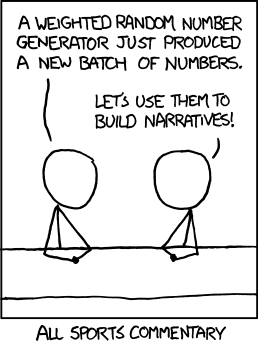Some days ago, Eurogamer ran an interview with Chris Crawford, where the legendary game designer discusses his pursuit of interactive storytelling. In the localization circles, some wondered how something like that would affect our work. After all, where do we sit now with writing and narration in videogames?
Implicit narration
At their most basic level, any game is a system of elements in constant interaction. And the audience might create narrative links between them without there ever being any formal writing.
For example, a Formula One driver could lose his home race at the last bend due to engine failure. The event is the results of many independent elements, many of which completely random, but the audience could create a narrative link nonetheless: "this track is really cursed for him!"

The same happens in videogames. Let's take, say, Castlevania. The player is trying to reach the exit at the top of the screen. However, when he gets there, he doesn't notice a bat coming though. Startled, he falls down to the bottom. The bat has no will of its own and maybe was placed there procedurally, at random, but the player may think that it was an ambush plotted by a little flying pest (the programmer).
We may call this level "implicit narration". By sheer number of hours, it's the predominant form of narration in games (well, unless you are playing MGS). And, in the hands of a skilled game designer it can convey an incredible amount of information. However, it's almost completely non textual, and thus will only be seen by the translators in the form of encyclopedia articles ("Megabat: be careful when approaching this beast of the night!") and little else.
Interactive narration
Let's imagine a Formula 1 game: probably the developers will have created a set of pre-defined sentences to be shown depending on the race result, from celebratory "Good job, you beat them all!" to derisive "You arrived last... did you stop for a snack?" In other words, they took a set of foreseeable game situations (final position/implicit narrative) and reinforced them with contents prepared in advance (comment/interactive narration).
For them to be as effective as possible, you must try and understand the essence of the implicit narration underneath, and match their core elements in the translation. So, if the game is a fast-paced multiplayer shooter like Unreal Tournament, it's better to keep your writing short and functional: "Attack the enemy core!" On the other hand, if your title has a stronger focus on the story, like Diablo 3, this should also reflect on your writing: "Kill the Wretched Witch in the Ancient Ruins".
Formal narration
If implicit narration was controlled exclusively by the player, and interactive narration was almost a joint partnership, formal narration is firmly in the hands of the writer. The form may change from a FMV cutscene in Final Fantasy, devoid of any interaction whatsoever, to dialogues in Half Life, where the player retains full control while characters are talking, but the essence doesn't change: a certain position has been reached or a certain goal has been achieved (trigger), narration starts, and the player can't do anything to change its course.
In some way, it's like the game ships with its own spin-off tv series: it's enjoyable because it has the same characters and settings, but it's clearly not interactive.
This may lead to some friction between implicit and formal narration in which, for example, a Grand Theft Auto player might have accumulated a large amount of in-game cash, but his character will still be shown accepting a risky mission on the premise of needing money.
Some titles, like the first Deus Ex, avoided this issue by creating a branching structure in order to accommodate some of the in-game choices of the player. However, this kind of scheme requires to create an exponential amount of contents, which may not be seen by all players. In a world of high-definition avatars with full-dubbed voices it's a perspective that few can afford.
Chasing the Dragon
That was for traditional, commercial game narration, but what about more experimental systems? Well, there's one title that delivers a fully interactive narration... Façade.
It works, but it also highlights how difficult it is to create a story that is both interesting and coherent when the player is allowed to change its course at any time. As it stands, playing it is more a novelty like "exquisite corpse" than a truly immersive experience.
As Chris Crawford himself said in the interview, this is not an easy challenge to take, but there's no denying that delivering non-linear, interactive experiences is at the heart of our work. Achieving true interactive narration would be a real revolution, and something that only this medium can achieve. Best of luck, Chris!